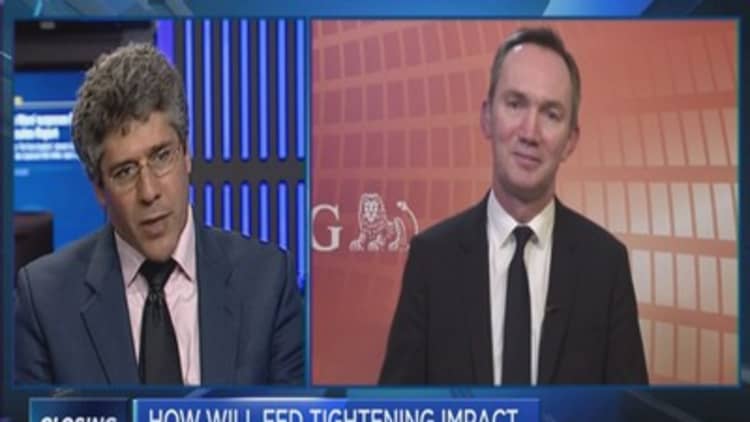Well, that wasn't that bad after all, was it?
The Federal Reserve hiked its benchmark interest rate for the first time in nearly 10 years and global asset markets - on the whole - behaved themselves in spite of months, or even years, of market participants fretting over a liftoff from record low rates.
Across the Atlantic in Europe, the announcement has left analysts and economists picking up the pieces and deciding what this relatively "dovish" rate hike means.
The euro
The single currency forms the crux of the issue when looking at how Europe has been affected by the rate hike. The European Central Bank (ECB) has been busily knocking down the price of the euro this year - despite it not being technically part of its mandate - with its aggressive monetary easing.
However, it reached a stumbling block in early December when traders were left disappointed by how it decided to extend its quantitative easing program. A rate hike in the U.S. has lifted the price of the dollar with domestic investors bringing cash home with the prospect of better yields in the country.
In the process, this lowered the euro and would likely benefit exporters in the euro area. After a brief spike as the announcement was made on Wednesday, the euro has been trading lower against the greenback and was down at 1.0849 by 10:00 a.m. London time.
And depending on who you believe there might be further good news for these companies. Kit Juckes, global head of foreign exchange strategy at Societe Generale, believes that the euro will reach parity against the U.S. dollar but said in a note that "progress towards that level may, at least initially, be choppy and slow."
Others like David Bloom, global head of foreign exchange strategy at HSBC, are more cautious, predicting that the dollar's rally has already occurred and expects the euro to drift higher next year.
Economy
If the U.S. - long-considered the driver of global growth - is strong enough to resist a rate hike then this can prove to be a positive for Europe. Exporters, with a heavy exposure to the U.S., will stand to benefit and the region has the added benefit of a central bank that is very much diverging away from what Chair Janet Yellen, and her team, are undertaking.
Regardless of the rake hike, David Watts, a credit strategist at independent research provider CreditSights, sees a "robust" euro area economic recovery led by a rebound in household spending. The bottom line for policymakers has always been unemployment though, which is at three-year lows but still stubbornly high at 10.7 percent.
Stocks
Names in the financial services, banking and insurance sectors were the main focus Thursday with European benchmarks rallying around 2 percent. U.S. lenders have been busy raising their consumer borrowing rates, thus potentially gaining more revenues from customers eager to finally gain some yield on deposits.
This led to global positivity around the first steps to normalization and the share price of banks including Natixis and BNP Paribas were lifted as well as Old Mutual, Delta Lloyd and AXA. Christian Gattiker, the chief strategist and head of research at Julius Baer, said in a note that investors should be loading up on European small and cyclical stocks, as well as U.S. large caps.

—CNBC's Arjun Kharpal contributed to this article.




